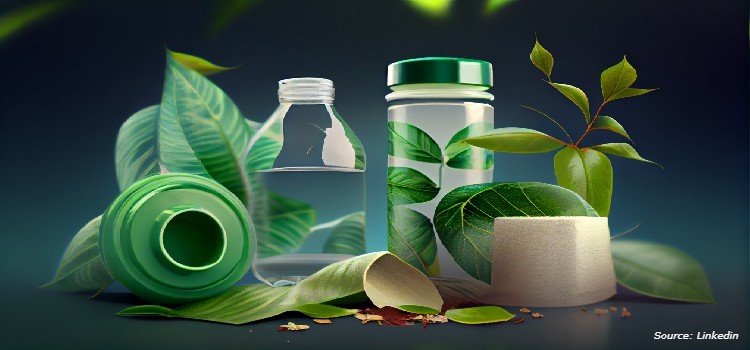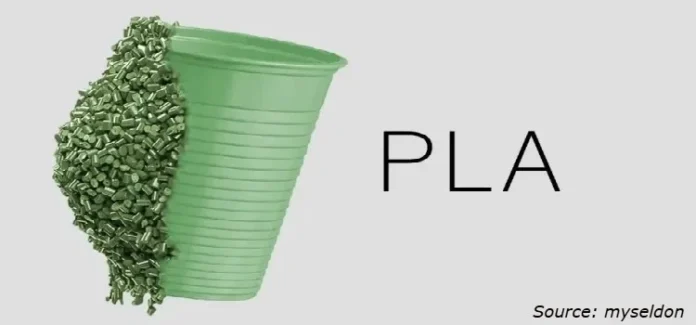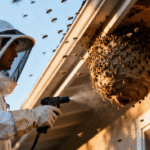Bioplastics are renewably sourced materials that are biodegrade and assist in reducing the threat of plastic wastes that are strangling the planet and contaminating the environment. Plastic is the third most prevalent petroleum product used across the world; it is consumed at a rate of 200 million tons annually. Producing from a non-renewable resource (oil), it is a contaminant, non-biodegradable, and takes more than 1000 years to break down. It is composed of polyesters resulting from the decomposition of raw plant material by several bacterial strains, biodegradable plastics. Alternatively, the use of bioplastics is promoted which encompasses the recovery of natural polymers from cellulose or potato and corn starch wastes. They are 100% biodegradable, as resilient and as universal as petrochemical plastics, already used in agriculture, fashion, medicine and, in general, the packaging and container market, and biopolymers are already finding favour in towns and cities across Europe and America for environmental grounds: they are known as polyhydroxyalkanoate (PHA).
Table of Contents
ADVANTAGES OF USING BIOPLASTICS
Bioplastics reduces dependency on fossil fuels. The production of conventional plastics uses petrochemicals based on non-renewable resources; they hasten the degradation of natural resources and in so doing release toxic greenhouse gases. Bioplastics reduce carbon emissions by utilizing other renewable resources such as corn, sugarcane, or potato starch, according to the European Bioplastics Association. These bioplastics (packaging film, disposable kitchenware, and medical equipment) are made from carbohydrates rich in vegetable sugars. Meanwhile, they are engaged in building the plastic product that would correspond to a good reduction of carbon emissions compared to conventional plastics.
Bioplastics can also help make a dent in the ongoing plastic waste problem. The UNEP indicates that plastic is produced in excess of 300 million tons globally every year, and puts the estimate for the amount of plastic waste ending up in the oceans at around 8 million tons. The ever-increasing characteristics of plastic pollution in marine waters are inducing heavy tolls on marine organisms. Turtles, whales, and seabirds mistakenly consuming plastic pieces can sustain injuries or even die. In addition, high molecular weight plastics degrade into microplastics, triggering a veritable cascade of adverse health effects on human beings by way of the food chain. PHA biodegradable plastic is faster selective as a condition than conventional plastics break down. In controlled conditions, PHA can break down in a few months, while conventional plastic polymers take over a period numbering from several decades to centuries. This rapid decomposition in landfills and natural habitats would suppress long-term damage to the environment.
CHALLENGES OF USING BIOPLASTICS
Bioplastics have some benefits as well as some drawbacks, among the most significant concerns is the ground needed for growing bio-based plastics. Mass production of bioplastics could compete with the production of food crops, raising food costs and posing challenges of land use. Using crops like corn or sugarcane to make bioplastics could, for instance, shift land from food output. A study published in the Nature Communications journal found that mass production of bio-plastic could enable more farming activity, which leads to deforestation or land degradation. Use of non-food crops, farm residues, or algae as feedstocks is evidence why green technologies need to be used in bioplastic manufacture.
Secondly, there is little existing bioplastics recycling infrastructure. Although biodegradable plastics decompose easily, they can still not decompose as effectively in the environment. Specific conditions such as temperature, moisture, and microorganisms contribute significantly to bioplastics decomposition. In the environment of landfills or the ocean may not be available, so some of the biodegradable plastics will not fully break down as desired. Also, as most recycling infrastructures are not designed to process bioplastics, they get contaminated with conventional plastics and decrease the efficiency of recycling.
KEY FACTORS BOOSTING THE BIOPLASTICS INDUSTRY

Environmental Concerns and Plastic Pollution
One of the main reasons towards the use of bioplastics is increased plastic pollution around the world. Plastics are known for being long lasting perhaps they take hundreds of years before they break down. This results in huge landfills and ocean pollution and destruction of habitats. Call for eco-friendly replacements have been on the rise as society fights with natural damage of conventional plastics. Bioplastics are seen as a potential answer to reduce pollution and relieve the pressure on waste management system holding the promise of decomposing faster than regular plastics, they therefore help to limit long-term environmental effects.
A number of companies are actively engaged in the use of bioplastic with the intention of minimizing plastic pollution worldwide. A good example is The Dow Chemical Company, which has just introduced a rasin composed of 70% recycled plastic that is made up of a low-density polyethylene (LDPE). Such growth in the number of projects and initiatives by the chemical industry companies is likely to minimize plastic waste, resulting in reduction of plastic pollution worldwide.
Climate Change and Carbon Footprint Reduction
Bioplastics are more environment friendly due to reduced carbon emissions. Rather than being constructed from fossil materials like ordinary plastics, bioplastics are manufactured from renewable organic sources, corn, sugarcane or algae. Bioplastics have the ability to replace petroleum based products to minimize lower greenhouse gas emissions that go along with the manufacture of plastics today. Some estimates made in research show that bioplastics, in particular from plants absorbing carbon dioxide during their life cycle, are far less carbon intensive than conventional plastics. This resonates with worldwide attempts to mitigate climate change and transition towards cleaner industrial processes.
Renewable Resources and Reducing Dependency on Fossil Fuels
Bioplastics are more environment friendly due to reduced carbon emissions. Rather than being constructed from fossil materials like ordinary plastics, bioplastics are manufactured from renewable organic sources, corn, sugarcane or algae. Bioplastics have the ability to replace petroleum based products to minimize lower greenhouse gas emissions that go along with the manufacture of plastics today. Some estimates made in research show that bioplastics, in particular from plants absorbing carbon dioxide during their life cycle, are far less carbon intensive than conventional plastics. This resonates with worldwide attempts to mitigate climate change and transition towards cleaner industrial processes.
Different nations are implementing various measures with the goal of net zero emissions. For example, India launched several projects including the National Green Hydrogen Mission, PM-KUSUM scheme and PM Surya Ghar to achieve net zero target by 2070. Similarly, the U.S. government introduced the End Plastic Pollution International Collaborative to reduce plastic pollution and achieve carbon neutrality. Such initiatives are poised to further drive the adoption of bioplastics.
Recent Advancements in Bioplastics
Bioplastic companies in recent times made tremendous advancements in sustainable development through the focus on producing green products and processes as they reduce the environmental footprint of regular plastics. These changes are initiated by the need to save natural resources, reduce plastic pollution and fight climate change. So, they have a number of uses, the shifts range from construction and agriculture to packaging and pharmaceuticals. For drug delivery systems, for example, scientists have created nanoparticles made of biodegradable polymers. Based on renewable sources, these polymers provide a potable option to conventional plastics for medical uses. These improvements in bioplastics in the healthcare sector underline sustainable solutions, which give an ecologically friendly option to standard plastics.
Moreover, the bioplastics sector offers an interesting development in the recycling of food industry off-cuts to produce biodegradable products. Researchers have discovered a technique for creating see-through, pliable bioplastic films using food waste-derived amyloid fibrils, including whey proteins. Not only this creative solution recycles food industry leftovers, it also offers a way of generating sustainable, biodegradable packaging materials. Integrating circular economy ideas helps to cut waste and provide a more environment friendly option to conventional plastics.
CONCLUSION
Bioplastics sectors are advancing a very powerful way to sustainable development regarding the production of eco-friendly but functional materials. Such developments, where compostable packaging can be made from biodegradable polymers or food industry wastes used as raw materials, show that bioplastics can potentially dent our heavy reliance on petroleum-based products. Such developments not only reduce damage done to the environment, but they usher the circular economy by triggering recycling initiatives and reducing waste. The subject will further become developed technologically towards preparing a demand for the future that sets pathways to sustainable development for business and consumers.
ABOUT THE AUTHOR:

Akhilesh Sarmah is an enthusiastic and dedicated researcher. He is committed to helping clients navigate complex business challenges by offering actionable insights through thorough research. Akhilesh has a strong interest in various sectors, including Construction & Manufacturing, Healthcare and ICT & Media and he aims to deliver valuable perspectives in these areas. Beyond research, Akhilesh also enjoys learning about art, culture and music. The author can be contacted at info@nextmsc.com
Apart from that if you want to know about “Benefits of plastic recycling” then please visit our Lifestyle Category.

























